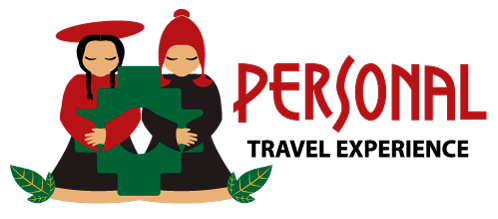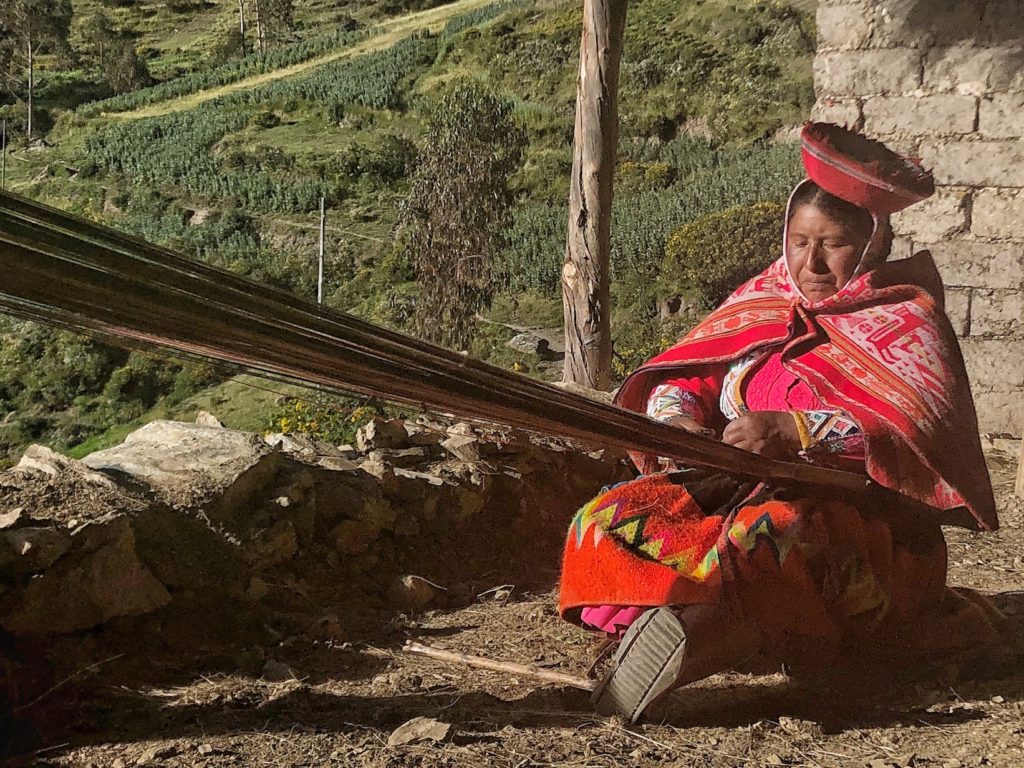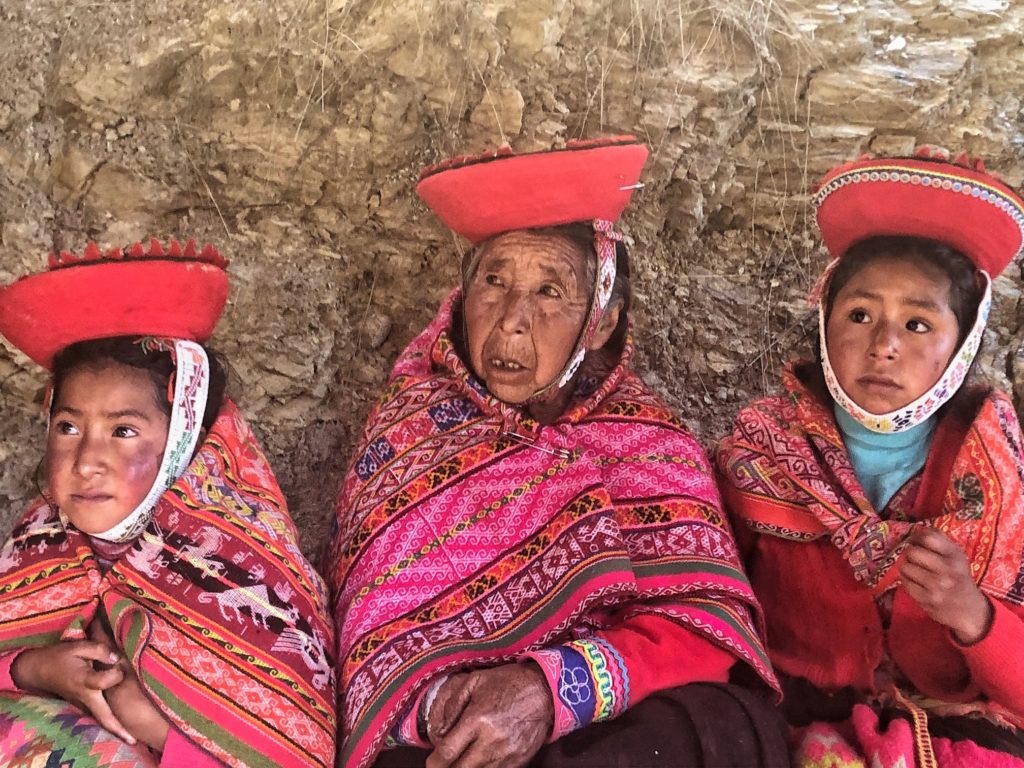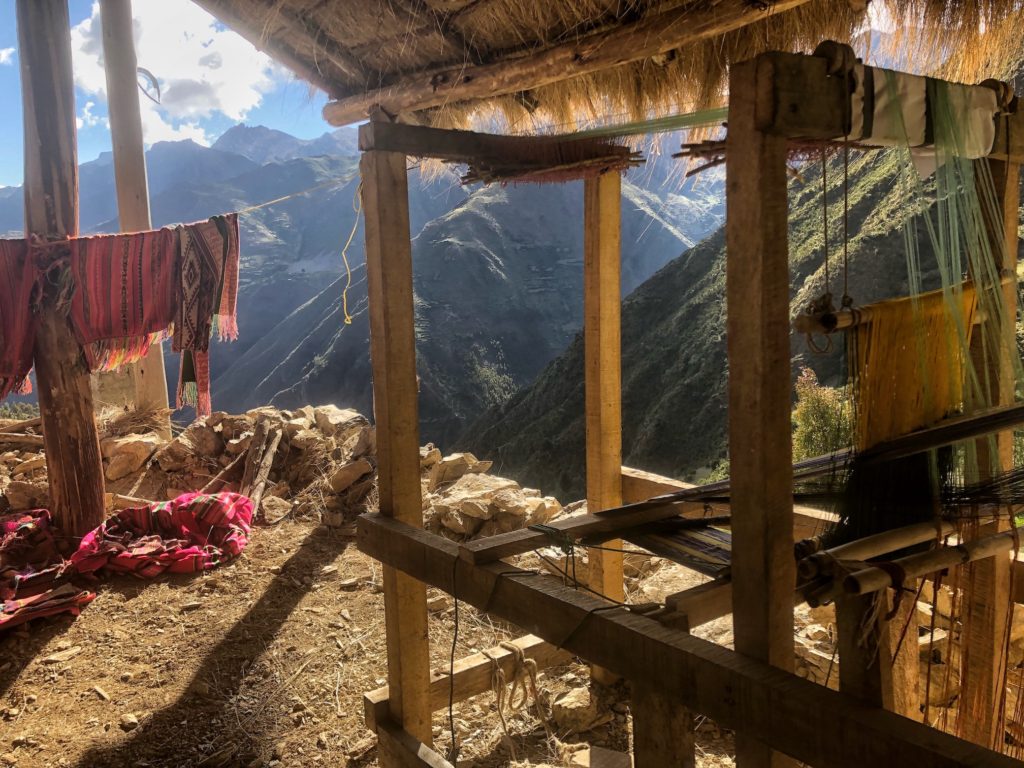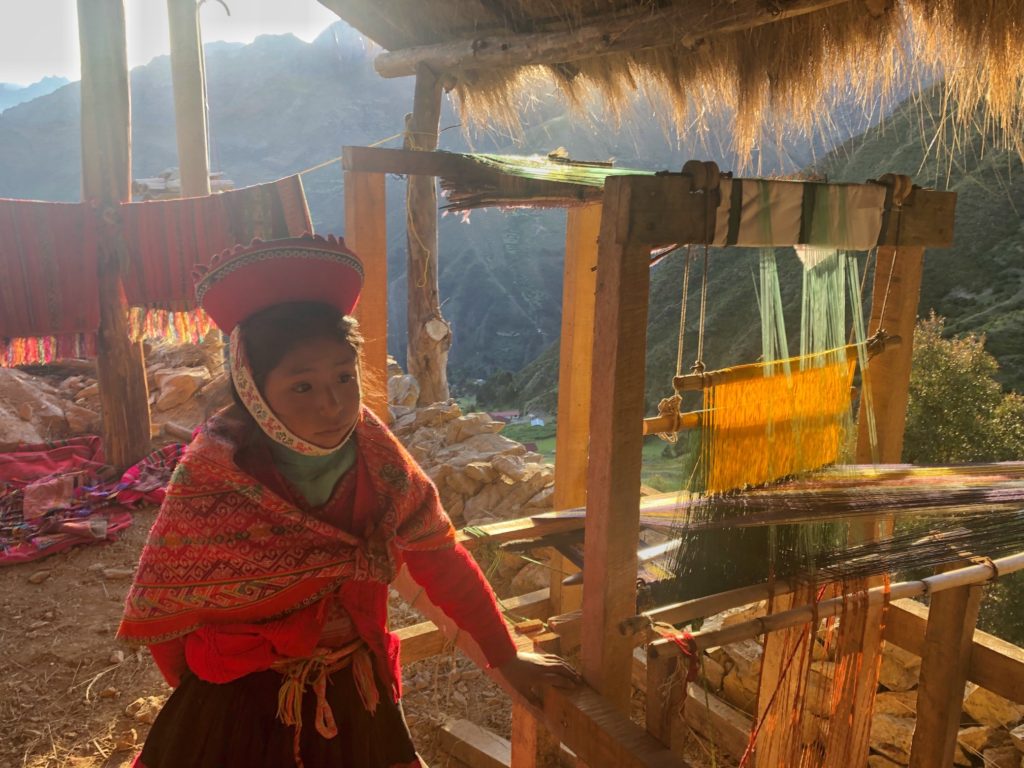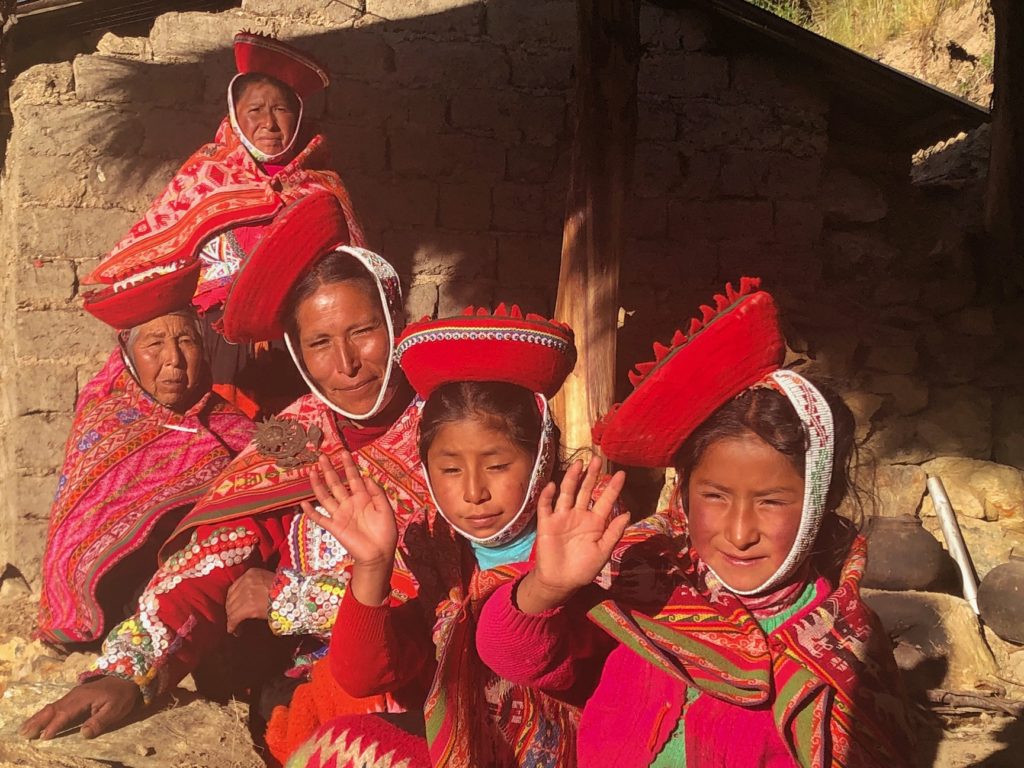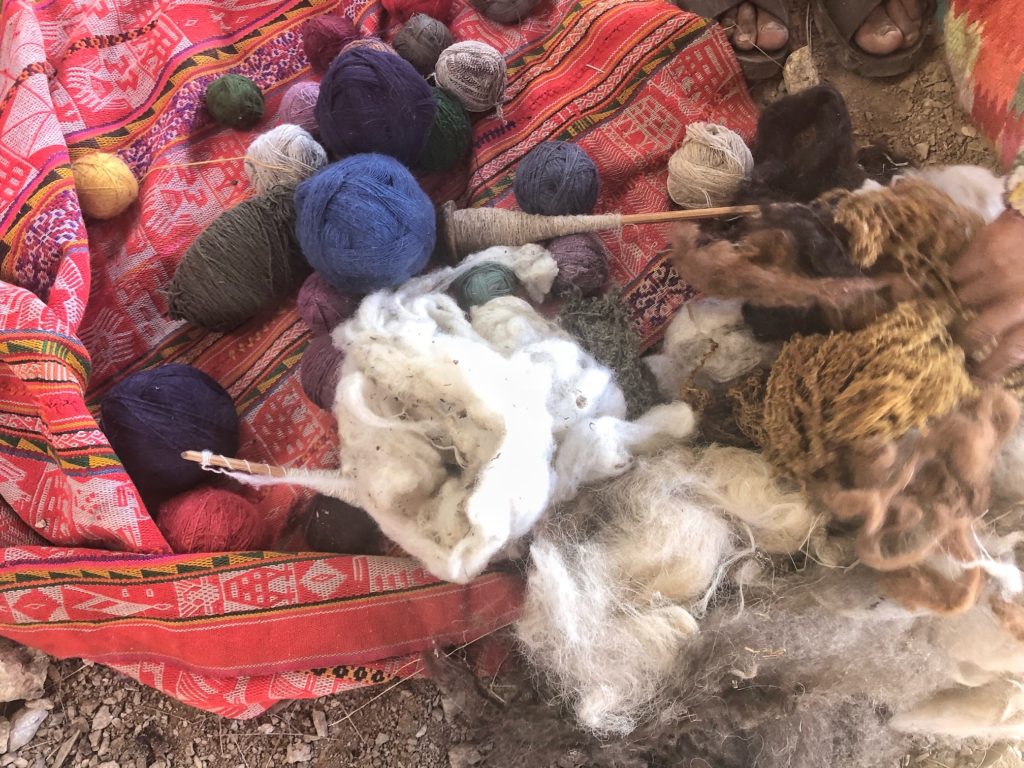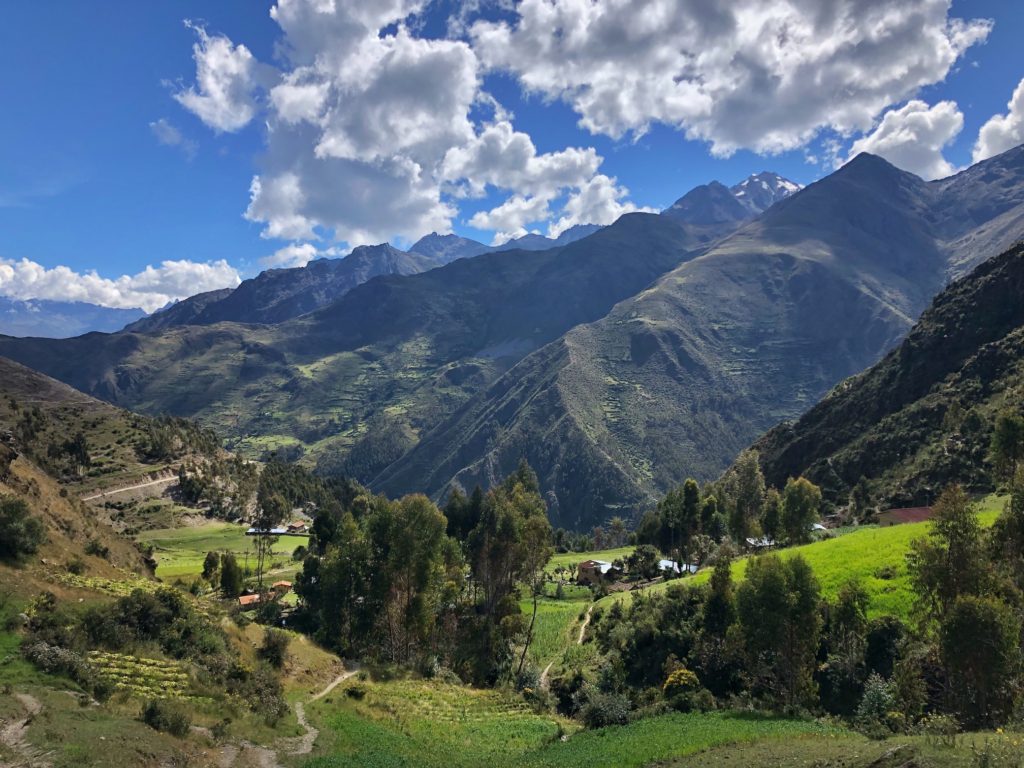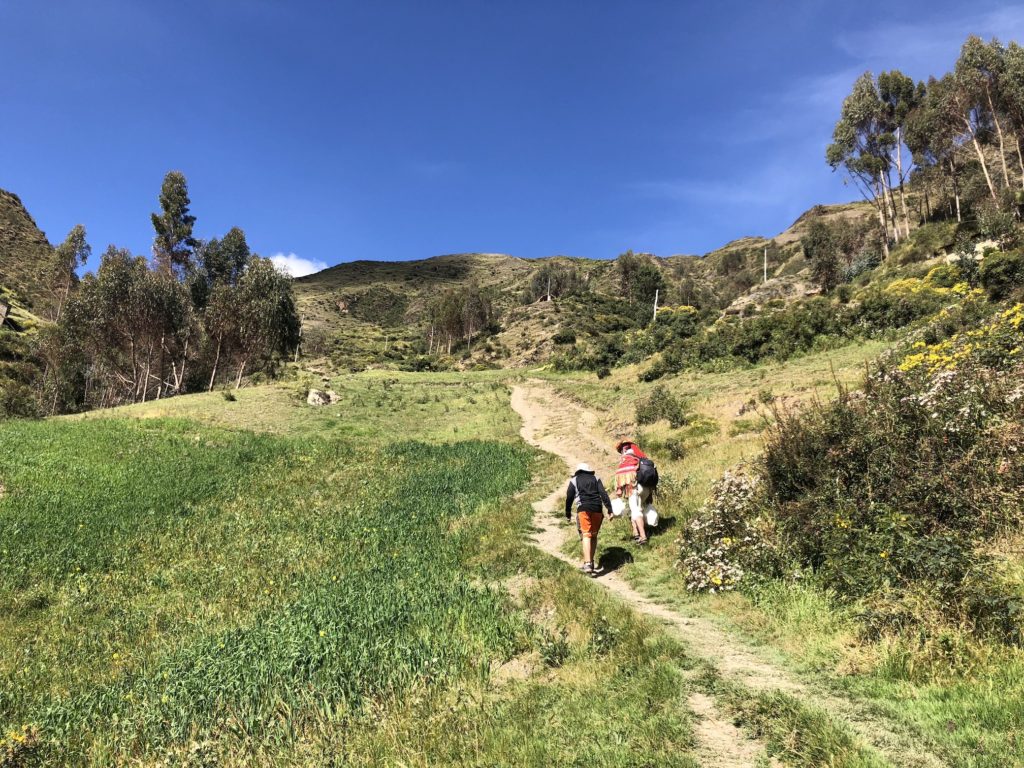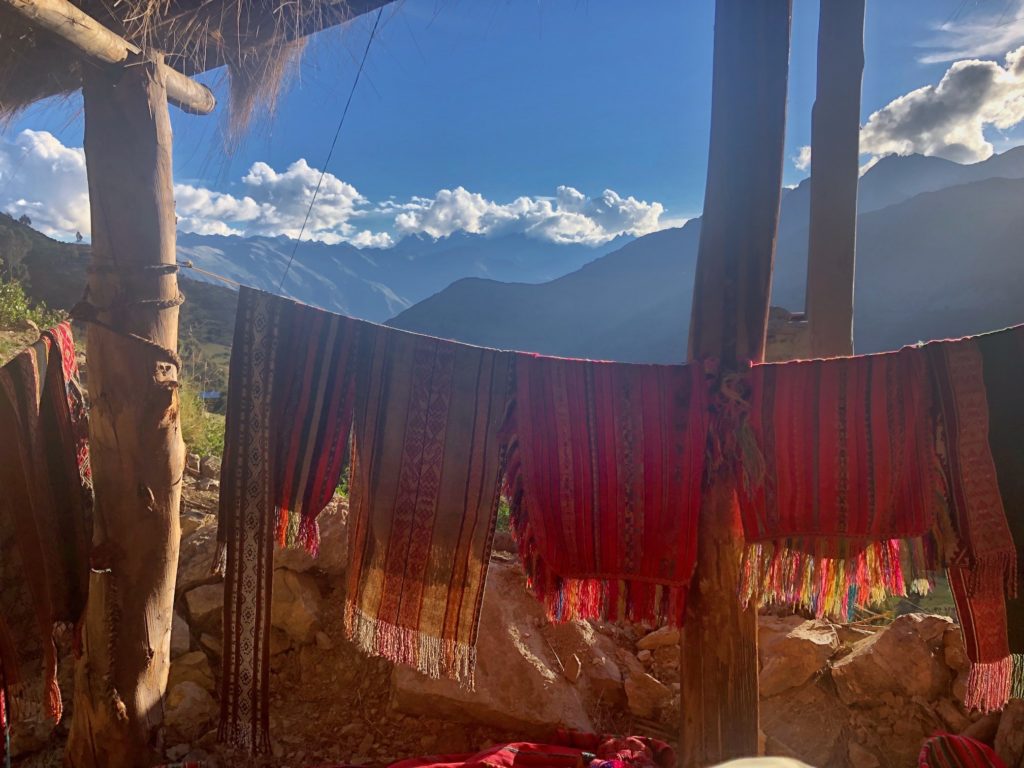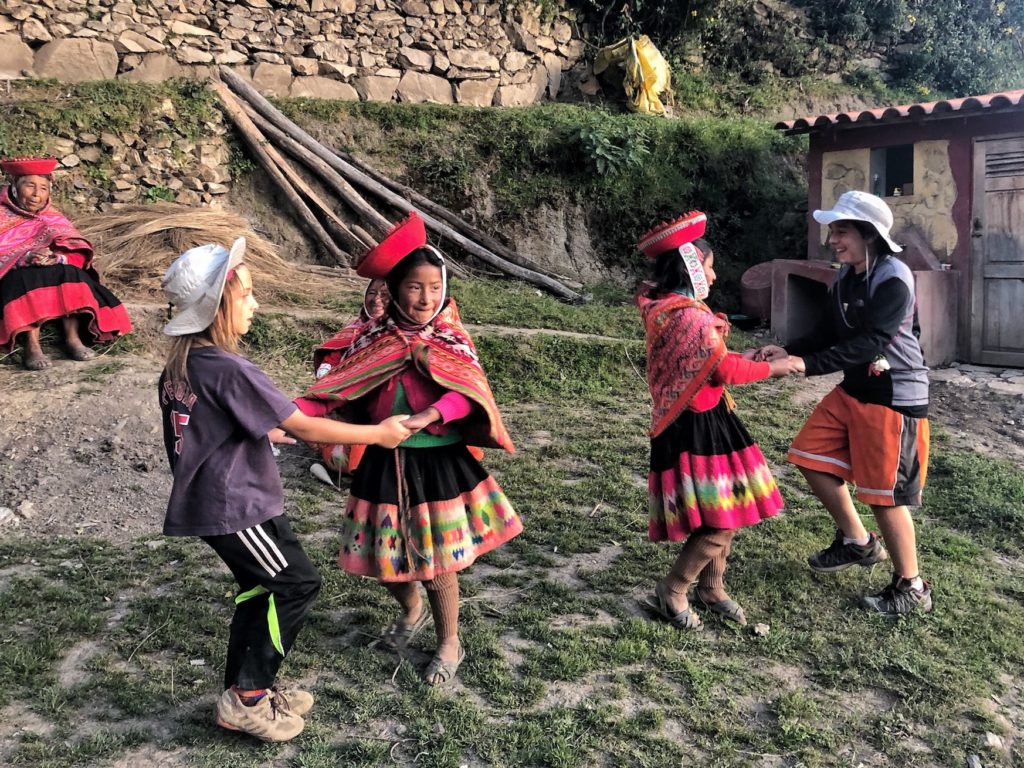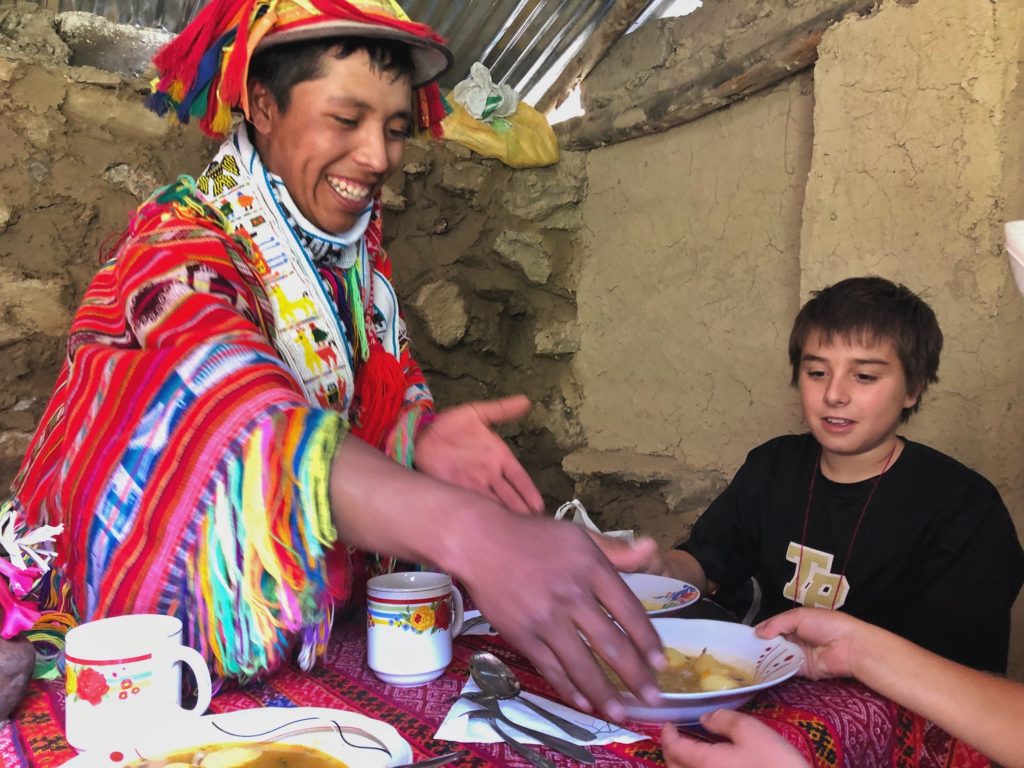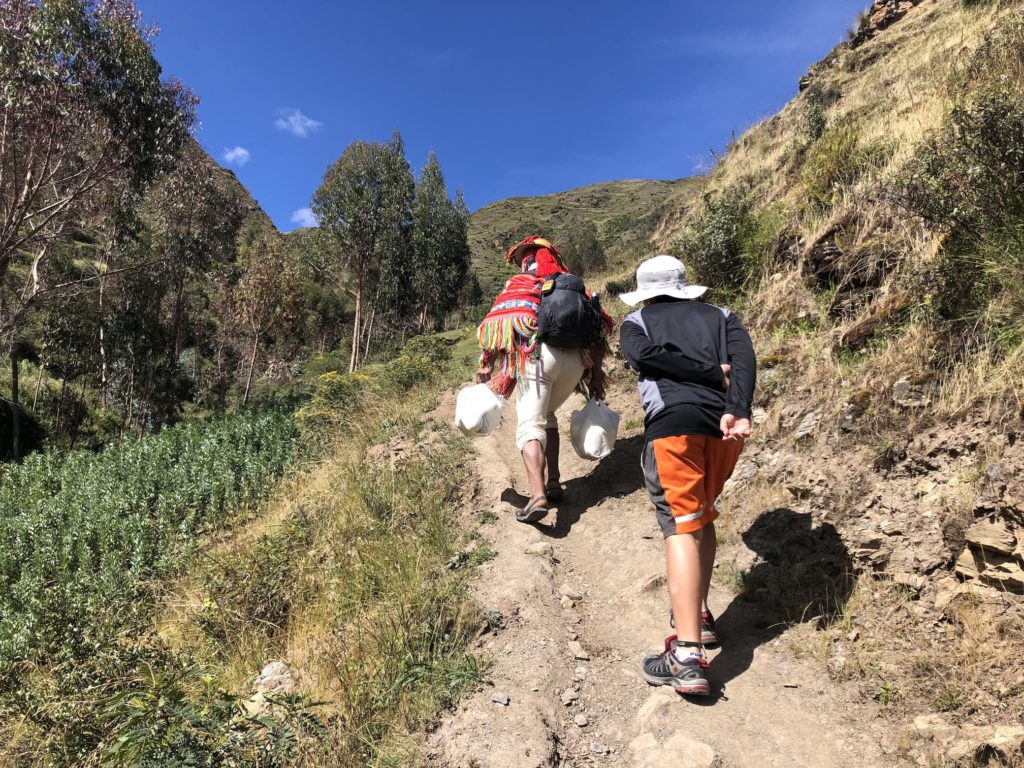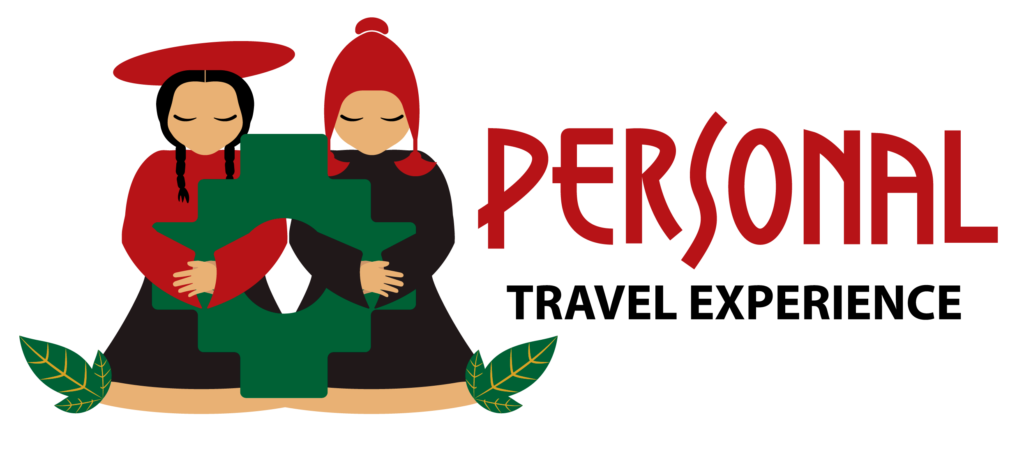Projects in Huilloc Alto
Sustainable, Responsible, Inclusive and Transformative Tourism
Providing opportunities, empowering the community, improving the quality of life in a rural Andean village
Traveler’s Lodge Construction and Kitchen Renovation Project
Saturnina Puma is a humble woman of Incan decent who lives in the small community of Huilloc Alto (>3,800m). She is a widow of five children, and comes from a long lineage of weaving artisans. Huilloc Alto is a community that still revers Tupac Amaru, the last indigenous Incan monarch, as their liberator.
Our relationship with Saturnina blossomed into a friendship that began with a chance meeting in an Ollantaytambo market in 2016. Saturnina invited co-founder Silvia and other Personal Travel Experience staff to visit her high mountain home. Saturnina and her family embraced us with open arms, sharing a meal, singing and dancing, playing music, and teaching us about the process of natural-dyed, hand-made textile weaving. Due to their remoteness, Saturnina and her community were not able to practically take advantage of economic opportunities such as those available to lower Huilloc. Over time, we developed a mutually agreed upon plan to help this rural community in a series of projects that centered on sharing this wonderfully authentic location and its people with adventurous travelers.
The first project of the multi-step plan was the design and construction of a small traveler’s lodge and the renovation of her kitchen facility so that she could begin to accommodate visitors. We organized a school group from Thayer Academy to do the work over a two-year period. Successive parts of the development plan for Huilloc Alto – as you will read about below – include promoting young community leaders, creating trekking programs in the area, educating the local people about protecting the natural environment, empowering women and young girls to develop their textile crafts, and creating a weaving collective to sell their beautiful hand-woven textiles.
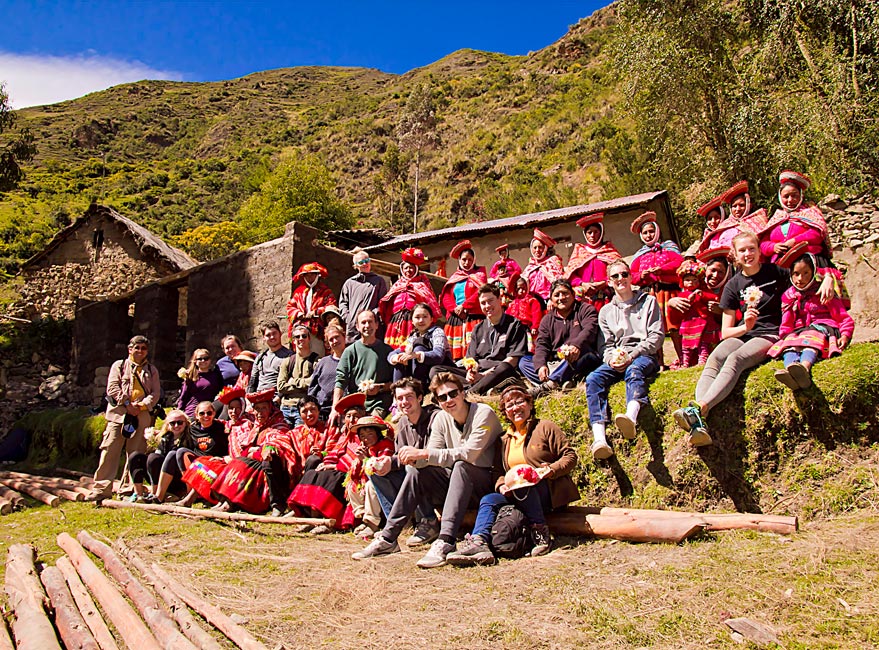
Community Youth Leaders Development Project
Elvis, the 23-year-old, son of Saturnina, assumed the responsibility of his family at a young age. He overcame adversity – for example, walking 1,000m down the mountain to his school each morning, and then back up to his home each afternoon – to eventually earn a scholarship for high academic performance. After his secondary education, Elvis decided to study at the Chio Lecca Fashion School in Lima. His immense talent and creativity is reflected in his roots and his cultural identity. Today, he is a fashion designer, and still quite active in his family enterprises, combining his own designs with traditional techniques of weaving, and the fabrics made by the women of his community. Personal Travel Experience supports this young entrepreneur, a leader in his community, in pursuit of his achievements, dedication, and passion. Furthermore, we hope to inspire and guide the youth of the village to pursue their dreams!
Women Empowerment and Development Project
ASSOCIATION OF ÑAUPA KAWSAY
This long-term project, started in 2016, is comprised of traditional weaving apprenticeship programs for the women, daughters, and granddaughters of 10 families in Huilloc Alto, and the development of an enterprise to help them bring their weavings to market. The community is cut off from the lower Huilloc Association of Weavers Qorihina Awac Warmicuna due to the distant location of their homes, at 3,800m. Until the arrival of Personal Travel Experience, the women and people of the village had no opportunities other than small-scale agricultural sales. This project seeks to improve the lives of the entire community by providing training and economic opportunities to the women of the village, and in doing so, endeavors to promote pride in their Andean cultural identity. The women of Huilloc Alto recognize the ancestral value of their Incan roots, and are proud of their heritage, as evidenced by their traditional dress, hairstyles, foods, their crops, and most especially their textiles. They have identified and continuously pursue the value of their artistry with cultural rigor, and have literally woven into the designs the stories and meanings of their lives.
OBJECTIVES:
- Build self-esteem and confidence among women
- Strengthen women’s identity and role in the community
- Connect community to its values
- Maintain a deep connection to their Andean heritage
- Pass down knowledge of the weaving tradition
- Improve general business skills
- Provide a potent economic opportunity
- Improve the overall quality of life for the members of the Huilloc Alto community
- promote traditional Andean culture by maintaining a sense of pride in its values, its traditions, and its customs
Sub-projects
Tour Guide Development and Community Education Project
This long-term project, started in 2017, is focused on developing healthy, responsible tourist activities in and around the village of Huilloc Alto. The region of Huilloc Alto is nestled deep in the Andes and provides the traveler with a relatively easy and elegant entry into the sanctuary of mountains where these humble people live. Together with the community members, we have designed intimate, interactive, and engaging programs that bring the traveler close the people and their way of life. Activities include music and dancing, sharing meals, meeting local people, touring the village, planting trees, and cultural and educational seminars on high altitude farming practices, traditional weaving techniques, food production, clothing customs, and more. In addition, with the input of the community we have designed both short and long hiking and trekking routes that bring travelers over 4,000m and into the realm of the Apus, or mountain gods. We are also developing llama-assisted trekking programs, ensuring that all activities are conceived and executed by and directly for the benefit of the local people.
OBJECTIVES:
- Develop rural tourism opportunities and llama-assisted trekking routes in this spectacular mountain region
- Provide healthy opportunities for gainful employment for all members of the community
- Maintain a deep connection to their Andean heritage
- Share the incredible natural landscapes of the region with travelers
- Educate the community (and travelers) on the benefits of protecting Pachamama (Mother Earth)
- Preserve the pristine, natural environment of the region
- Provide a potent economic opportunity
- Improve the overall quality of life for the members of the Huilloc Alto community
- Promote traditional Andean culture by maintaining a sense of pride in its values, its traditions, and its customs
Sub-projects
TRAINING, PRODUCT DESIGN, CUSTOMER ATTENTION – TREKKING CIRCUITS
We are actively working with the community members to develop single and multi-day trips with varying degrees of difficulty. We currently offer two circuits, see below.
-We are focusing our training on developing trekking guides for these routes, ensuring that they understand the needs of their guests. Future enhancements to improve the guest experience include the use of pack animals (llamas).
Circuit One – TOKAPU ROUTE
- Walk up to the breathtaking heights of Huilloc Alto, in the Andes outside of the Sacred Valley of the Incas
- Visit the Children’s Garden; interact with the children and the rest of the community, share song and dance
- Visit Saturnina and her family, share a traditional meal, and learn about traditional techniques of natural dying, spinning, and weaving wool
Circuit Two – QUEUÑA COCHA ROUTE
- Requires an overnight stay, the second night over the col of the mountains to the lagoon of Queña Qocha; an hour-and-a-half hike by foot from Saturnina’s home
- Participate in a traditional Andean spiritual ceremony to Pachamama
- We return to Huilloc Alto, to Saturnina’s home, for a delicious home-cooked lunch and a Cacharpari, farewell party.
- We seek to educate the local community about protecting Mother Earth, particularly against the detriments of plastic bags, straws and other single-use items.
- Our training will focus on the damage perpetrated by the use of plastics; the harms of solid waste generation and disposal; methods of reducing, reusing, and recycling; and the benefits of composting.
